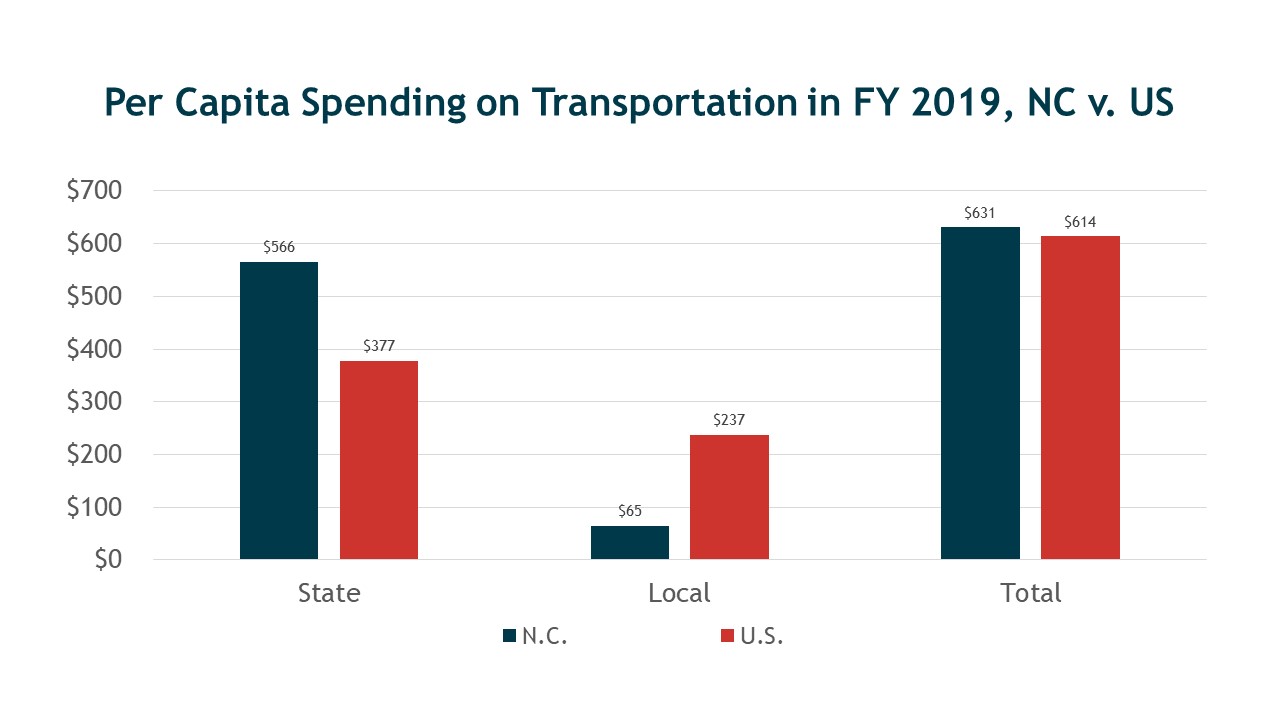Investing in Transportation Infrastructure

The NC Chamber Foundation is creating a strong, sustainable future for businesses and communities across North Carolina. Through nonpartisan research and thoughtful collaboration, the NC Chamber Foundation serves as a convener and works to disseminate information related to complex challenges, craft sound policy recommendations, track progress, and drive a future-focused vision to expand economic growth and prosperity for all North Carolinians.
The work of the NC Chamber Foundation is leveraged by the NC Chamber and aligned business organizations to advocate for change that has positioned North Carolina as a top-10 state to work and do business.
Transportation funding is a prime example of this critical synergy. For years, the business community and other pro-growth leaders have recognized the daunting challenge that an underfunded transportation network poses to a competitive future for North Carolina.
With that in mind, the NC Chamber Foundation commissioned the Institute for Transportation Research and Education at NC State University to conduct a study to identify solutions for a diversified, stable, and economically efficient revenue model that will meet North Carolina’s long-term transportation needs, as well as address current challenges. That report was released by the NC Chamber Foundation in 2015, and an updated version of it was released in 2020.
The NC Chamber has leveraged this research to advocate for sustainable transportation funding solutions. One of those policies made it into this year’s state budget. We worked with Dan Gerlach, economic advisor to the NC Chamber Foundation, on this month’s Foundation Forecast, which looks at investment in our state’s transportation revenue model.
Meredith Archie
President
NC Chamber Foundation
Investing in Transportation Infrastructure
CNBC has ranked North Carolina as the top state for business. While we rightly celebrate that achievement, the NC Chamber Foundation realizes the need for a continued focus on analyzing trends, planning to work in that reality, and acting collaboratively in a timely fashion are crucial for progress.
That’s certainly true about how North Carolina – once called the Good Roads State – funds our transportation infrastructure. We’re significantly more dependent on the motor fuels tax than other states, and it’s clear that the emergence of electric-powered vehicles and growing fuel efficiency threatens that source of revenue.
The state’s dependence on the motor fuels tax stems from our historic division of responsibility between state and local governments for transportation funding. The chart below shows that North Carolina spends slightly more than the national average on transportation from both state and local sources combined. But North Carolina spends far more from state sources and less from local sources, making what happens in state transportation funding crucial.

Our state policymakers understand this reality. This year, the N.C. General Assembly voted to increase transportation funding without raising taxes. They did so by dedicating a percentage of the state sales tax from the General Fund to the Highway and Highway Trust Funds. The percentage increases to six percent of total sales tax collections in three years and produces about $600 million annually.
The chart below shows the cumulative effect of adding not only a new revenue source, but a revenue source (sales) that grows faster than current sources (motor fuels). By 2041, the combined Department of Transportation funds will have 21 percent more revenue than they would have under current law.

This step is meaningful, but more work lies ahead. The N.C. Treasurer’s annual Debt Affordability Study indicated that the state had zero debt capacity for transportation projects over the next five years. While the sales tax transfer is incredibly important, it’s not sufficient.
The chart below is busy, but it makes an important point. While the transfer provides a healthy infusion of cash and establishes a higher base for funding, it only improves the future growth rate of transportation funding from 1.7 percent to 2.1 percent. Even if inflation returns to more normal levels, this rate will not be sufficient to meet long-term needs.

Our state’s leaders have shown the commitment to make hard choices to solve big problems. We did not become number one by accident and look forward to continued work on our state’s infrastructure.